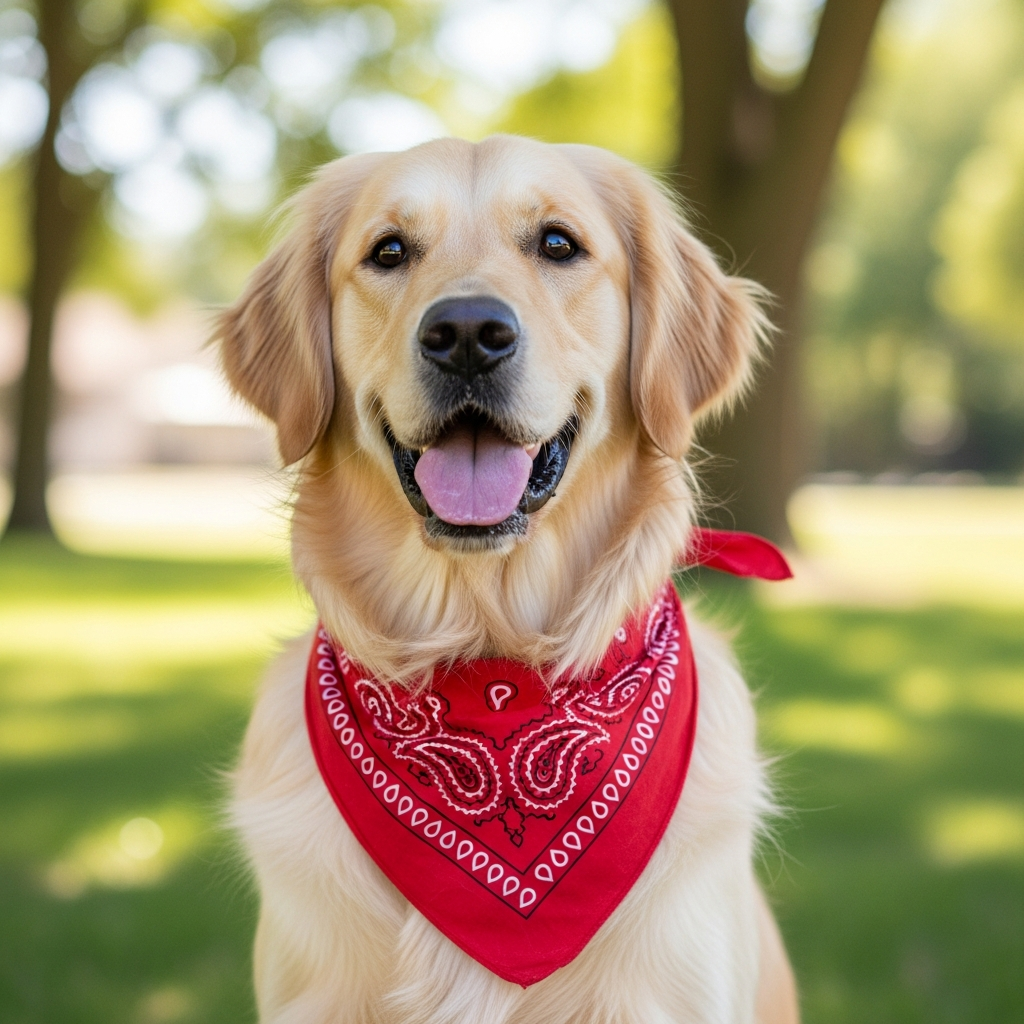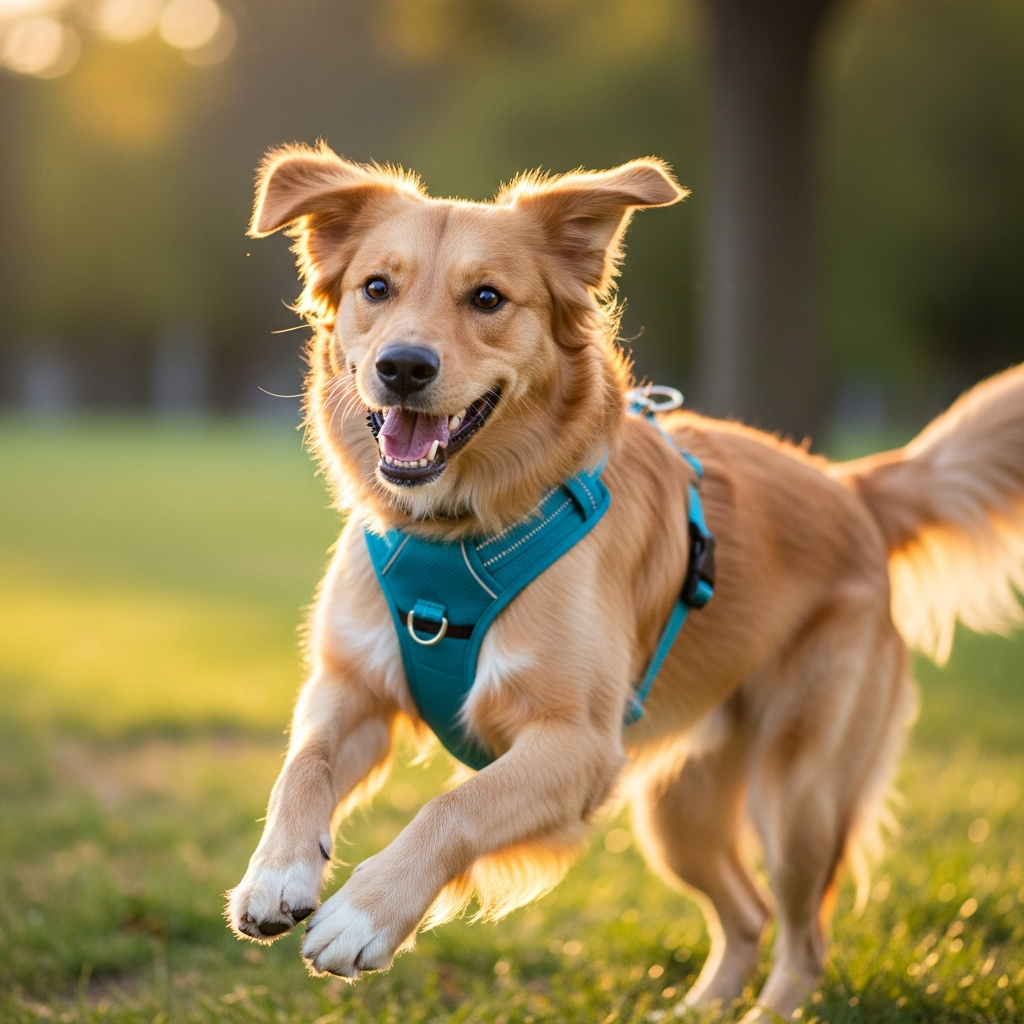You love your big dog, but walks are a constant battle against their strength. Using a simple collar feels risky and stressful for both of you. You need a safer, better way to stay in control.
Yes, a harness is almost always better and safer for walking big dogs. It removes dangerous pressure from their neck, gives you more control over their powerful body, and significantly reduces the risk of injury. A well-designed harness makes walks more enjoyable for everyone.
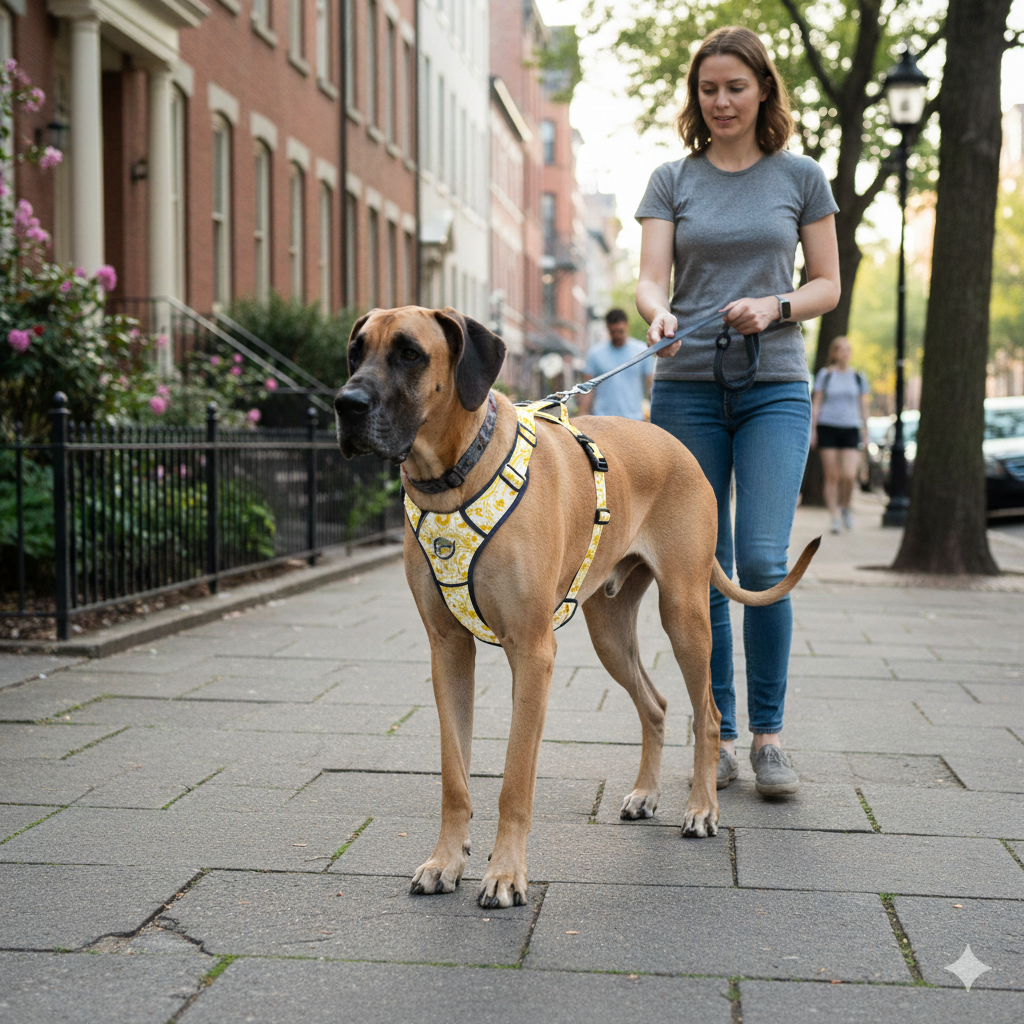
As a dog gear designer, I've spent years tackling the unique challenges presented by large and powerful breeds. It's not just about making a small dog's collar bigger. It's about safely managing incredible force. A collar concentrates all that pulling power directly onto the dog's neck, which is a recipe for disaster. A harness completely changes the physics of a walk by giving you leverage over their entire torso, not just their head. This simple change is a game-changer for safety and control.
What Makes a Harness Safer for a Big Dog's Body?
You worry every time your big dog lunges at a squirrel while wearing a collar. A single powerful jerk could cause real damage. You need a solution that protects them while still giving you secure control.
A harness is safer because it distributes all the pulling force across the broad, muscular areas of your dog's chest and back. This design avoids putting any pressure on the delicate and vulnerable structures in their neck.
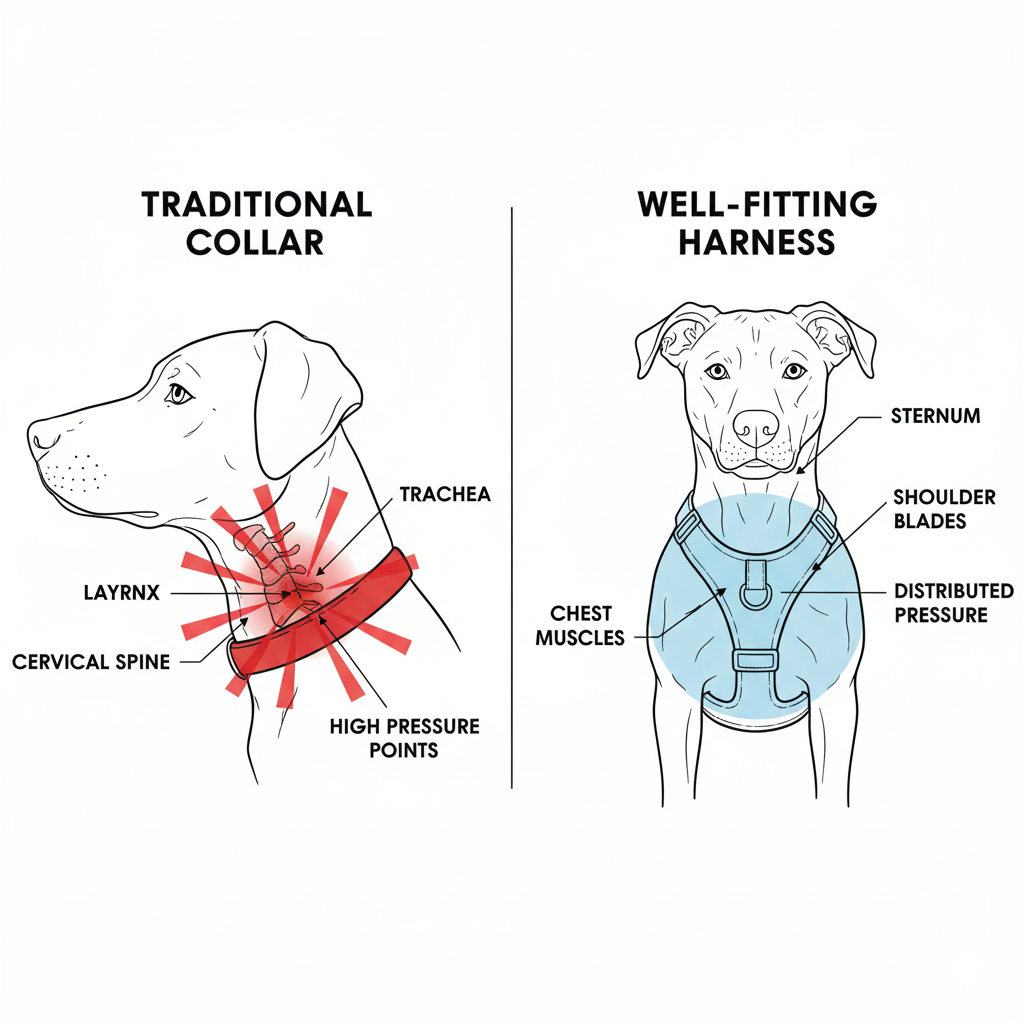
When I design any piece of gear, safety comes first. A dog’s neck is a complex area containing the trachea (windpipe), the esophagus, major blood vessels, and the cervical spine. Applying extreme force here, even accidentally, is incredibly dangerous. In contrast, a dog's chest and shoulders are powerful and strong, built to handle force and movement. A harness uses these strong points to your advantage. It works like a weightlifter's belt, supporting the core and distributing a load safely across the body's strongest parts. This is especially critical for brachycephalic (short-nosed) big dogs like Boxers or Mastiffs, whose breathing is already compromised. For them, a collar is not just uncomfortable; it's a significant health risk.
Potential Injury Risk: Collar vs. Harness
| Body Part | Risk with Collar | Risk with Harness |
|---|---|---|
| Trachea (Windpipe) | HIGH (Choking, Collapse) | VERY LOW |
| Cervical Spine | HIGH (Vertebral Damage) | VERY LOW |
| Thyroid Gland | Moderate (Bruising, Damage) | VERY LOW |
| Shoulders/Chest | LOW | LOW (Possible chafing if ill-fitting) |
How Does a Harness Give You Better Control Over a Strong Dog?
Your arm feels like it’s being pulled from its socket every time you go for a walk. Your powerful dog lunges without warning, and you're losing the daily tug-of-war.
A harness gives you better control by changing the point of leverage from the neck to the dog's center of gravity. A front-clip harness is especially effective because it redirects their forward momentum, turning them gently back towards you whenever they pull.
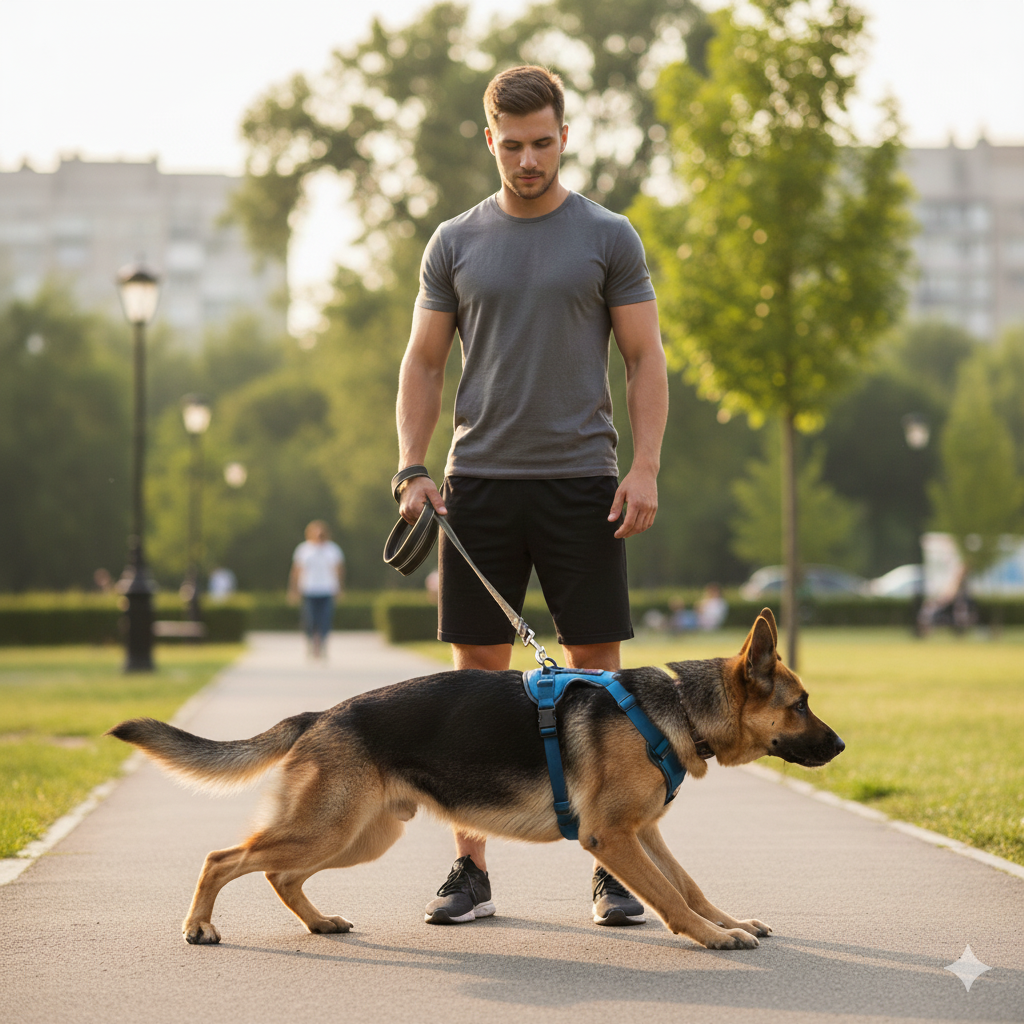
The physics of control are simple. Trying to control a 100-pound dog by pulling on its neck is like trying to steer a truck by grabbing the hood ornament. The body's momentum will always win. This is where thoughtful design comes in. When designing a front-clip harness, my goal isn't to punish the dog for pulling. The goal is to make pulling an ineffective strategy. The D-ring on the chest acts as a pivot point. When the dog lunges, the leash tightens and steers their body to the side, breaking their forward drive. This gives you a moment to regain their attention and reward them for walking calmly. It turns a battle of strength into a simple lesson in physics. It's a smarter, not stronger, way to walk your dog.
Harness Types and Control Level
| Harness Type | Primary Function | Best For | Control Level for Pullers |
|---|---|---|---|
| Front-Clip Harness | Redirects momentum | Strong pullers, training | High |
| Back-Clip Harness | Comfortable walking | Trained dogs, casual walks | Low |
| Dual-Clip Harness | Versatility for training | All situations, use with a double-ended leash | Very High (with training) |
| Collar | Holding ID tags | Perfectly trained dogs | Very Low |
What's the Best Type of Harness for a Really Big Dog?
You're finally convinced and ready to buy a harness, but the store is filled with options. You need to choose one that's strong enough for your giant dog and won't break or cause other problems.
For a really big dog, you must prioritize strength and fit. Look for a harness with wide, padded straps, heavy-duty metal hardware, and multiple adjustment points. A front-clip or dual-clip model is usually the best for managing their power.
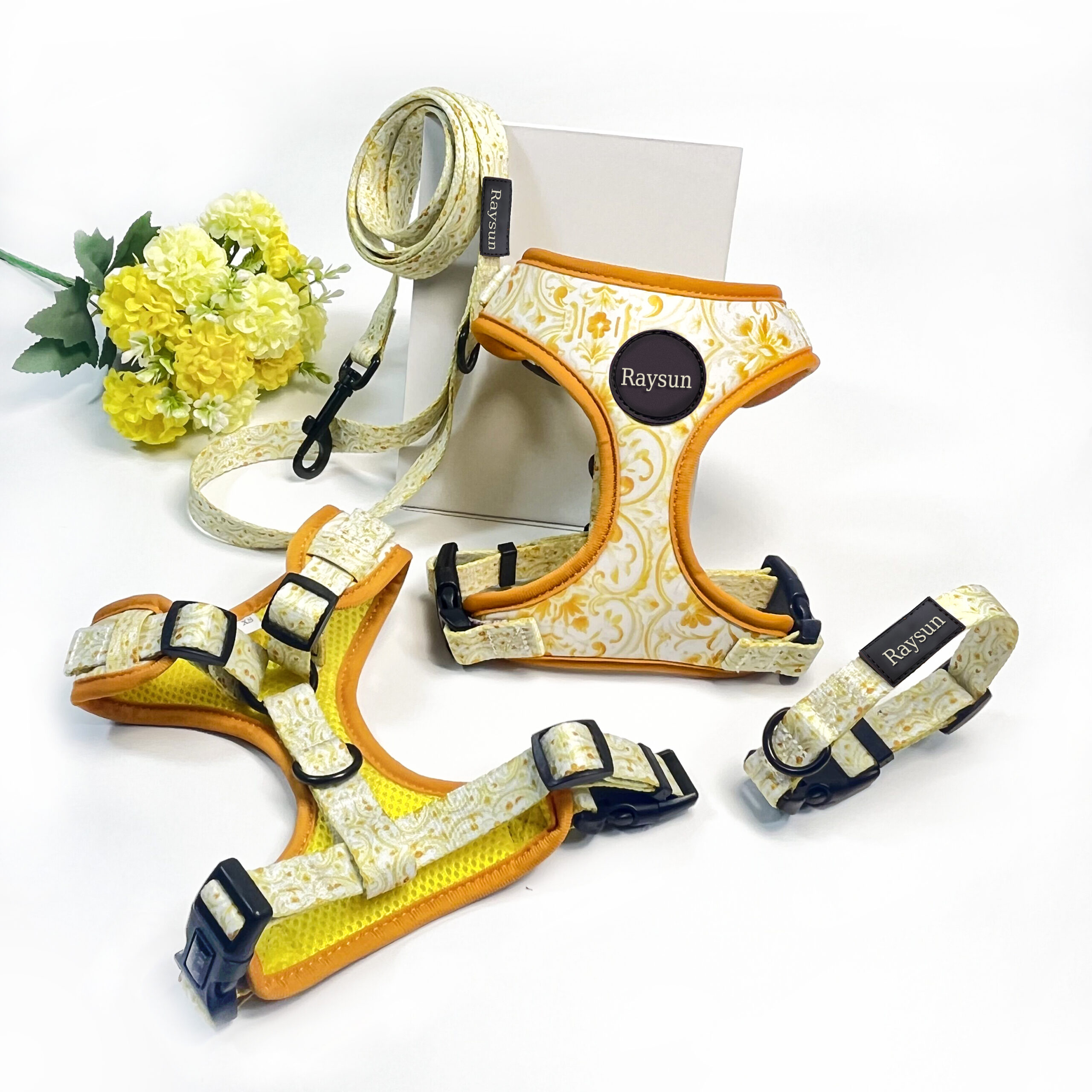
This is where my experience as a designer is most critical. I've seen too many product failures because a company tried to save a few cents on a buckle. For large breeds, every component matters. The webbing should be wide to distribute pressure and made of durable nylon with reinforced bar-tack stitching at all stress points. The hardware is non-negotiable. I always specify welded metal D-rings and load-rated buckles for any harness intended for a dog over 50 pounds. Plastic can become brittle in the cold and snap under the sudden force of a lunge. Padding is also key; materials like neoprene prevent chafing and add comfort on longer walks. Finally, fit is everything. A harness with at least four or five adjustment points allows you to create a snug, custom fit that won't shift or rub.
Conclusion
Switching to a harness is one of the best decisions you can make for walking your big dog. It provides safer, more comfortable control, protects their neck, and gives you the confidence to enjoy your time together.
Cindy Long is the Sales Manager of Raysunpets and a pet lover with over 12 years of experience in exporting pet products. She specializes in providing customized dog chest carriers, leashes and pet accessory solutions for the European and American markets, always focusing on the real needs of customers and pets, and is committed to creating high-quality, practical and comfortable products that allow fur kids to live happier lives.

